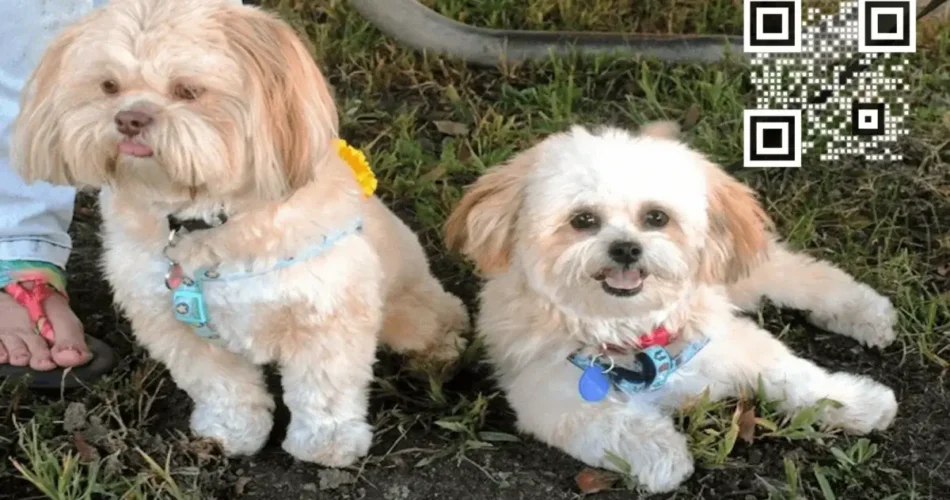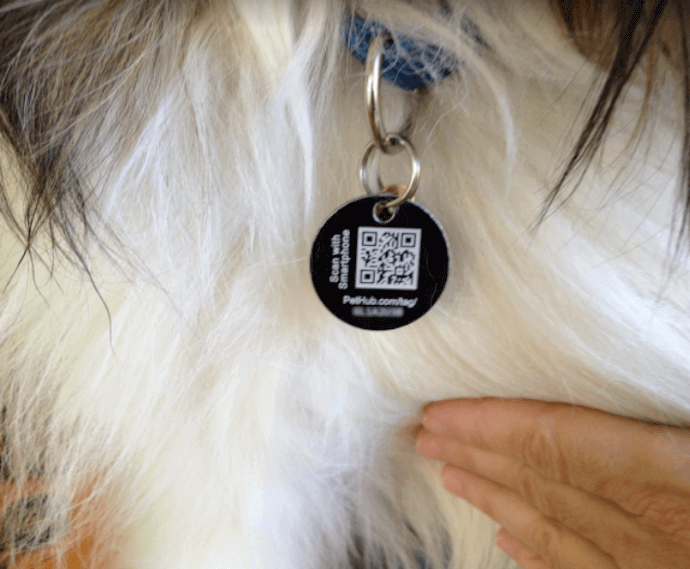Pets such as dogs are considered to be man’s best friend. And they surely are. These furry animals are loyal, amiable, playful, and lovable.
All pet owners and sellers will definitely agree to this!
Hence, as a person tames a pet, they eventually become a part of your family. And the owner develops a strong emotional connection with them.
So, it is obviously a nightmare for the pet owner if their furry friend is lost or stolen. This is the least thing they will ever want.
And to keep pets secure, both owners and sellers take various measures such as pet registration to get a pet ID. Yet, even as they take steps to ensure pet security, tracking a pet when it goes missing becomes a difficult job.
But, with the use of QR Code technology, owners and sellers can keep the pets protected.
And guess what—QR Codes are easy-to-use, not capital intensive, and will make tracking a lost pet much more quick and easy.
In this article, we will show how both pet owners and pet sellers can use QR Code-based pet tags.
Keep reading to know how.
In this section, we will detail on how pet owners can use a QR Code tag for their pet(s).
a. How do you generally keep your pet secure
Your pet’s security is your top notch priority. And hence you take a couple of measures to ensure their protection.
You know how pets always like to hustle around. And how an open door is always a temptation for them. Hence, to reduce this possibility, owners generally install automatic closing device on their gates to ensure that by no chance the door is left open. Though this measure is efficient, it is capital-intensive.
Owners also insert a microchip underneath their pet’s skin. This chip can be readable by a scanner that most vet’s offices and animal shelters are equipped with. So, if a lost pet is found by an animal control platform, this technique is beneficial. Yet, this method may cause some discomfort to your pet.
Another common way is to add an ID tag around the collar of the pet. So, in case your pet is lost and then spotted by someone, they can contact you/ the pet seller through the details on the tag. Hence, it is very important to keep your current contact information since you cannot update it once your pet goes missing.
The measures you take are efficient yet have their own limitations. The latest measure to protect your pets is by using digital ID Cards—QR Code pet tags. Though it is not the perfect measure, but to a large extent it helps you in tracking your pet efficiently.
In the next section, we will show you how.
b. Why use QR Code based pet tags
For the uninitiated, QR Codes are advanced barcodes that are easily scannable via a smartphone camera. QR Code pet tags are digital ID Cards, which are placed around the collar of your pet.
QR Codes are not black-and-white matrices of squares anymore. You can add design such as background color, a logo, or your pet’s image on the QR Code to make it completely personalized.
Plus, can also enable advanced features by creating a Dynamic QR Code. With this, you can set GPS scan tracking. Besides, you can update the contact information anytime.
You just need to create a QR Code with contact details which you want to encode. This includes pet name and contact information of the owner.
You can then print this QR Code and paste it on a hard surface such as a piece of cardboard, which will then be assembled to the keyring. You can then put it around your pet’s collar.
Here is how QR Code pet tags can help when your pet goes missing:
1. Help finder to contact owner quickly
If your missing pet has a QR Code tag, the finder simply needs to scan it to get all the contact information.
For example, if you create a Dynamic VCard QR Card, the finder will be prompted to ‘save as contact’ all the details encoded. This way, they will not have to manually type the number and then make the call.
Plus. you can also add additional details such as behaviour assessment and medical history in the information block of VCard QR Code.
This makes the whole process quick and easy.
2. Track your missing pet easily
As mentioned, by creating a Dynamic QR Code, you can add the feature of GPS tracking. With this feature, you can track the exact GPS location from which your QR Code was scanned.
Upon scanning, the finder needs to allow access to GPS location. Once done, the owner can know the precise GPS location.
3. Update contact details anytime
That is, you can update the information in the QR Code even after your dog goes missing. So you do not need to worry whether the information encoded in the QR Code is current or not.
You can simply update the details anytime you want by creating a Dynamic QR Code tag for your pet.
Now let’s move on to show how to create a QR Code tag.
c. How to create a QR Code pet tag
In order to create a QR Code, you need an online QR Code generator tool such as Scanova. Using this tool, you can choose from multiple QR Code categories, depending upon the content you want to encode. We recommend you to create VCard QR Code for your purpose.
d. QR Code tag—best practices
Here are a couple of things you need to keep in mind while creating QR Code tags:
1. Provide limited information
You should not encode too much information such as a pet identification mark and level of friendliness about your pet in a QR Code. Lost pets are generally misused to fetch money or get rewards. So, if your missing pet is not spotted by a good samaritan, the finder may misuse the information encoded in the QR Code to extort money.
2. Ensure enough contrast in customized QR Code
If you add design to the QR Code, ensure that there is enough contrast between the background color and data modules. That is, if the background color is dark, then the color of the QR Code should be light.
This will ensure that the QR Code is properly scanned.
That’s all the pet owners need to know about a QR Code tag. Hence, this way, with a QR Code tag, you can get your lost pet home quickly.
B. Pet selling firms
Pet selling firms can use QR Code-based tags for two use cases. These are:
a. To make tracking lost pet easy for customers
As a pet selling form, you will always want your customers to be happy. Hence, you will leave no stone unturned in enhancing customer experience.
So, when a customer buys a pet animal, you generally register the pet and provide an ID, which has your firm’s contact details.
So, the normal procedure, which is followed when a pet goes missing is: The owner of the missing pet reports the loss to you. Now say, a person spots the missing pet. The finder will contact you first. You will then contact the owner and relay them the good news.
The whole process requires a lot of effort for everybody. Hence to make the process easier, you can provide QR Code tags, which makes tracking pets easier for your customer.
The best part is famous pet platforms such as PetHub are already using this technique.
“Now if a citizen doesn’t want to contact us, just pull out your smartphone and scan the QR code on the back and it will take you to a site that has the owner’s information said. “The cool thing is that the owner can determine the amount of information he can see. If you just want your name and phone number, you can set that up.”
—Stephen Norman, Senior Animal Control Officer
He further added:
“There is a lot of times like now where we are running pretty close to capacity, so with QR Codes, if we can get animals returned home without them coming here, it is less work for everybody and less stress on the animal,”
Similarly, animal shelters in Miami are promoting people to foster pets, owing to Coronavirus pandemic. They are also providing smart identification of pets by putting a QR Code-based tag around the pet’s collar. The QR Code includes phone number, address and/or the Miami-Dade County license of the pet owner.
Now, let’s move on to show how to create a QR Code tag:
How to create
Since you will encode the information, as a customer buys the pet, you will need to create QR Codes programmatically in real time. For this, you can integrate your registration system with a professional QR Code generation system such as Scanova’s API.
You just need to send a GET request with data (QR Code design, size, format and the data to be saved in it) to Scanova’s API. The API will then respond with the QR Code image.
Likewise, you can use Scanova’s SDK and add it to your own server. With this tool, you can make API calls locally. This allows you to generate QR Codes at a must faster rate.
Now let’s move on the second use case.
b. To provide information about the pet
You can use QR Codes to encode information about each pet you are selling. This includes the breed, age, the diet required by the pet, and their medical history. Besides, you can include the pet’s behavior characteristics such as level of friendliness and protectiveness.
This will make handling the pet easy for the customer. Whenever they need the information, they can just scan the QR Code via their smartphone camera and get the needful.
All you need to do is create QR Codes and assemble it to a key ring, which is then put around the pet’s neck.
How to create
In order to create QR Codes for your use case, you can use a professional QR Code generator tool such as Scanova. Here, you can choose from multiple QR Code categories according to the content you want to encode.
We will recommend you to choose the category of Rich text QR Code. With this category, you can easily create a mobile-optimized landing page, which will have all the information you want to encode. You can then link this page to a QR Code.
For more information, you can refer to this detailed guide on Rich text QR Code.
That’s it. You just read a detailed guide on how QR Code tags can be helpful for pet’s security. Create one now to keep pets safe and secure.



